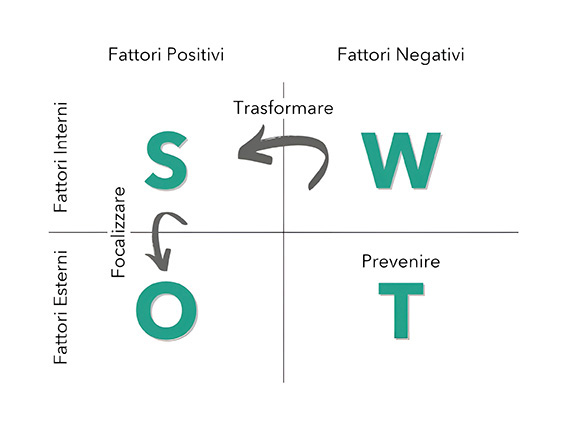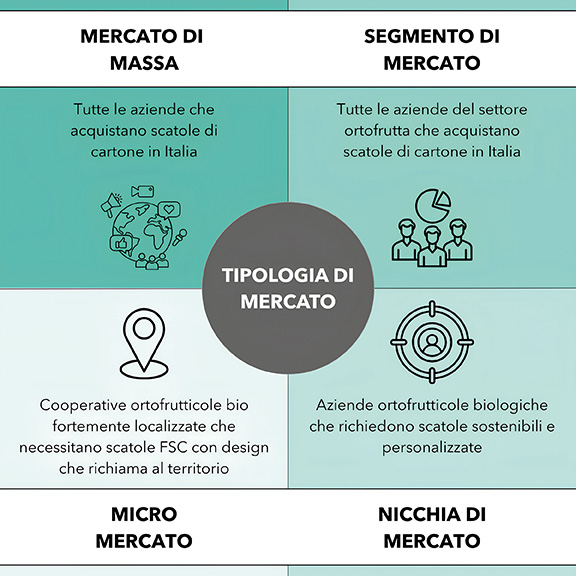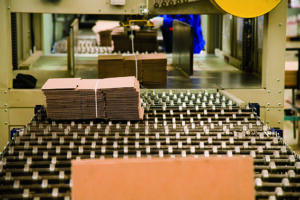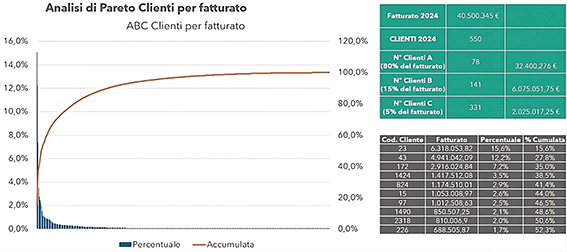In the cardboard packaging sector, the customer acquisition process should not be regarded as a mere marketing exercise, but as a strategic element that must be perfectly aligned with the company’s vision and internal operational capabilities. Consistency between what is outlined in the business strategy and the generation of commercial opportunities is key to achieving sustainable results and standing out in a highly competitive, low-margin market.
By Jan-Jürgen Bredereck (CEO) e Marco Brisotto (Senior Management Consultant) di Induvation GmbH
marketing@induvation.com o bredereck@induvation.com
Our experience has repeatedly shown that in this sector, companies often focus solely on creating sales opportunities without considering their potential impact.
– Is this customer aligned with our company’s target (strategy)?
– Is the request in line with our operational needs (efficiency)?
– Can our company achieve the desired margin on this order?
In a now mature and consolidated market, winning a new customer often means taking them from a competitor. For this reason, structuring the company to efficiently deliver the right service to the right customer significantly accelerates the acquisition process: customers change suppliers only when they find a partner better aligned with their needs.
Strategy first, then acquisition
In cardboard packaging, the business strategy defines the value proposition, which goes beyond the product itself and includes the level of service offered. Packaging, increasingly perceived as a commodity with low margins, requires a competitive differentiator that extends beyond price and the box seen as a simple “product.”
In the strategic analyses we conduct with our cardboard sector clients, through SWOT and Business Model Canvas, a recurring element often emerges: they tell us their Unique Selling Proposition is their extreme flexibility, understood as the ability to always say “yes” to any customer request.

Image 1:SWOT Analysis: strengths, weaknesses, opportunities, and threats for cardboard companies
Reflection: Is it truly sustainable, in the long run, to build a competitive advantage solely on unconditional availability?
On the other hand, if a packaging company bases its value proposition solely on the product and price reduction, it will find itself engaged in a price war that damages the market, drastically reducing its potential margins.

For this reason, it is essential to clearly define:
- Which markets to serve: you cannot serve all markets under all conditions, because in every market there will always be a competitor with a competitive advantage over us. This, of course, happens if the company does not specialize in specific market segments.
Example: deciding to focus on the fruit and vegetable market, as analyses from recent years show it is growing and has good profit margins.
- Which products and services to offer: not all solutions are suitable for all markets; therefore, it is necessary to carefully select the product and service portfolio to maximize value for customers without overloading internal processes.
Example: offering plateaux (fruit trays) to the fruit and vegetable market, because our company manufactures them with superior strength and water resistance compared to the market average (product differentiation) and also provides technical design support and R&D services (service differentiation).
 At what level of service: the level of service can become a distinctive element that justifies a higher price compared to competitors and builds customer loyalty.
At what level of service: the level of service can become a distinctive element that justifies a higher price compared to competitors and builds customer loyalty.
Example: offering the possibility of keeping a stock of plateaux (fruit trays) ready to be shipped on demand and paid for 90 days after delivery, even at the risk of having unsold packaging in the warehouse if the season turns out to be less productive than planned. This clearly represents a cost for the company; however, the customer perceives it as added value (service), and will be willing to pay for it, effectively turning an internal cost into margin.
Choosing to serve a specific market, such as the fruit and vegetable sector, means investing and building a company structure made up of processes, people, and tools, with the goal of always being the first choice for the leading companies in that market segment.
The fruit and vegetable market is just one concrete example among many: the same approach can be effectively applied to other sectors that require specialized services, such as small production runs, high-quality printing standards, or advanced logistics solutions like just-in-time, consignment stock, or milkrun systems.
By reasoning in this way, within the cardboard packaging market, it becomes possible to create your own Unique Selling Proposition: a clear and distinctive offer that compels the customer to choose your company over a competitor.

Image 2: Example: different market types on which to focus the business strategy
Communicating to the right market
An effective customer acquisition strategy relies on perfect alignment between the following elements:
- the company’s value proposition (our offering);
- the price;
- the specific needs of the market.
Selling means meeting needs and solving problems. That’s why communication must be targeted and tailored to each market segment, avoiding generic approaches that can weaken commercial effectiveness.

A clear and specific message helps attract customers who are truly interested in the services offered, reducing time spent on unproductive negotiations and increasing the conversion rate.
A focused approach brings several benefits, including:
- Higher probability of closing profitable sales opportunities:
concentrating on specific markets (segments) allows you to deeply understand customer needs and offer effective solutions, positioning yourself as a long-term technical partner for future demands in the sector.
- Reduced price-based competition:
by offering specific value to a given market segment, customers are more willing to pay a higher price for the service received, moving away from competitors who only compete on the lowest price. - Increased company profitability:
avoiding direct price competition not only allows you to maintain a sustainable cost structure, but also enables investment in new projects, machinery, and human resources for business growth.
The integration of marketing (generating interest) and sales (realization of interest), supported by tools such as CRM, business intelligence (BI), and market databases, also enables companies to continuously measure and improve their sales performance.
Data analysis allows packaging companies to optimize their commercial strategies over the long term and gain a better understanding of their customers. Here are a few examples:
- Conversion rate: how many of the potential customers who receive a quote for a box actually become clients?
- Causes of loss of offers: why do we lose offers? Is it due to price? misunderstandings about the packaging or the service? slow response times?
- Customer potential: how many boxes does a customer buy per year? what types? is there potential to expand our offering to this customer?
- Customer satisfaction surveys: it is interesting to discover, through surveys with clients, the real reasons why they choose us. This can help us further focus on our strengths, turning them into true competitive advantages that differentiate us in the market over the long term.
Customer ABC analysis: during a consulting session with one of our clients in the industry, we found that 80% of the revenue is generated by only 14% of the clients (and 50% of the revenue by just 1.6% of the clients).

What does this mean? The loss of a few Class A clients, who are strategic for the business, can have a significant negative impact on the company. The complementary data shows that 86% of the secondary clients (Classes B and C) generate only 20% of the revenue.
This indicates that the customer base is fragmented, and it becomes essential to ask: is it worthwhile for the company to manage these types of clients? Under what conditions is it worthwhile, and under what conditions is it not?
Other important questions to ask include:
- Have we defined the minimum profitability required for a project?
- Do we know when it is beneficial for the company to acquire a new client, and when it is not?
- Is it necessary to maintain a corporate structure capable of managing 550 clients, if 219 clients generate 95% of the company’s revenue?
If we don’t ask ourselves these questions, there’s a problem: this is a fundamental aspect for the medium- to long-term sustainability of the business.

Image 3 |example of ABC customer analysis for a box manufacturer
Choosing clients Is essential
Trying to offer everything to everyone while maintaining competitive prices is not a winning strategy. It is essential to choose your clients, products, and service levels.
The strength of a corrugated packaging company lies in identifying the right solutions for the selected clients’ needs, offering them at a price perceived as fair by the customers, while still generating economic value for the company.
Only by clearly defining these strategic choices can box and packaging manufacturers build a solid business, avoid entering an endless price war, and develop meaningful relationships with their target market.
Investing time in defining the strategy and aligning the client acquisition process with company objectives will lead to sustainable growth and lasting competitive advantage, laying a solid foundation for the future.

























